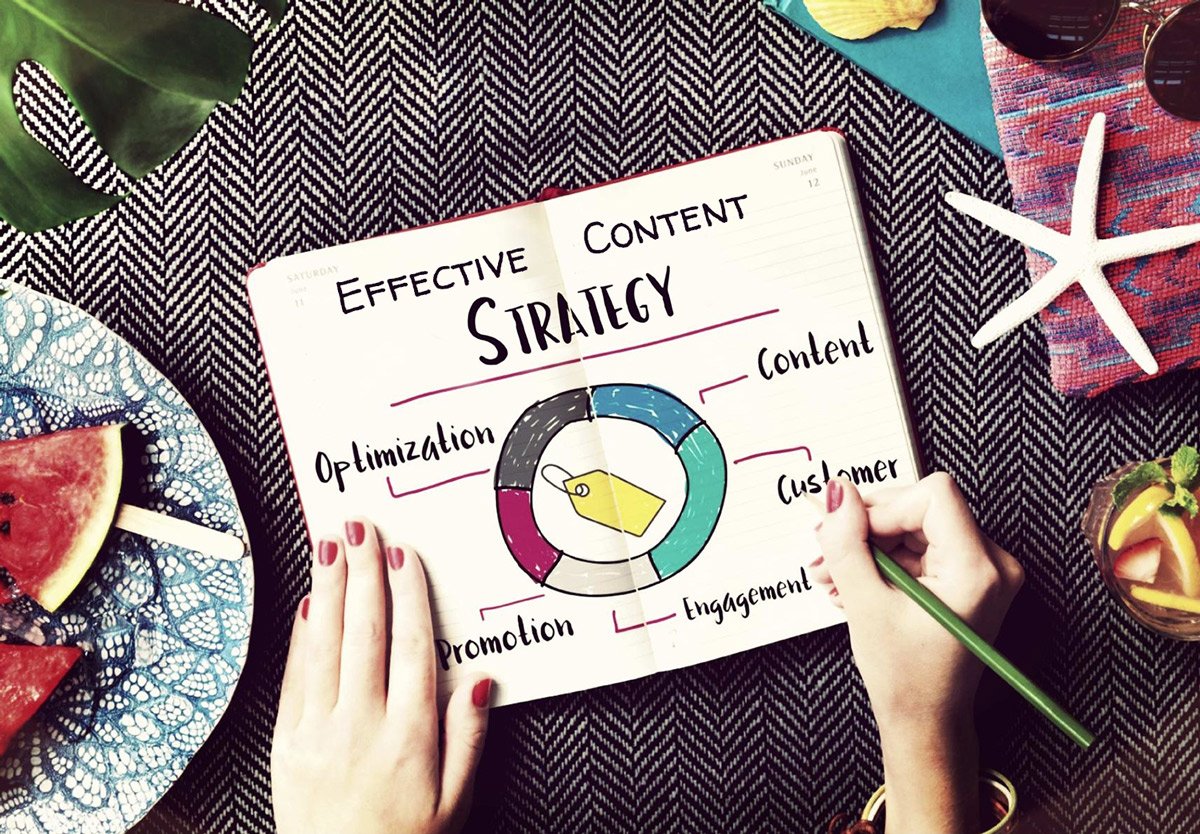It's impossible to avoid content; it's everywhere. We're constantly bombarded with content via the internet, social media, and even our headphones. It may seem impossible to stand out in a sea of information, but with the appropriate content strategy, you can rise above the noise and reach the right individuals.
It's a fantastic moment to implement a new content strategy or upgrade an existing one after you've built your own website. It's never too late to take a deep dive into your strategy and make it more efficient, whether your company is just getting started or you want to rework your existing content marketing efforts. In this article, we will discuss how to create an effective content strategy for your business.
Table of Contents
1. How Do You Define a Content Strategy?
2. Why a Sound Content Strategy Is Needed?
3. How To Create An Effective Content Strategy For Your Business? Explained In Easy Steps-
5. Get To Know Your Target Market
6. Take a Look At Your Competitors
How Do You Define a Content Strategy?
Before we get into the nitty-gritty of developing a content strategy, we must first define what it is. A content strategy determines which kind of media your company should utilize to reach its target market.
It also lays out a deliberate strategy for developing and distributing this content, which may include everything from Facebook and Instagram photos and videos to blog articles or an e-book.
Because content allows you to solidify your brand's voice and identity in order to engage with your audience, it's an important part of your overall marketing plan. Every piece of content you create serves a function. That goal should be determined by your company's objectives so that each piece of content has a purpose.
Why a Sound Content Strategy Is Needed?
A content strategy will help you define and achieve your marketing objectives. A comprehensive content marketing plan will aid you (or your marketing team) in working more efficiently by establishing specific tasks for developing and releasing content, identifying targets, and tracking your company's progress.
By planning ahead of time for your marketing efforts, you'll be able to see which strategies work and which don't for your company. You'll be able to figure out which marketing methods are the most productive, or which themes your target audience is most interested in.
How To Create An Effective Content Strategy For Your Business? Explained In Easy Steps-
Let's take a look at the steps involved in developing a content strategy. It's a good idea to go through these stages before creating content so you don't spend your time and resources on useless information. Building a fresh content strategy from the ground up can be intimidating, but it's well worth the effort. That's why we're going to take it slowly and methodically:
01. Establish Your Objectives
When you're first starting out with your content strategy, you want to make sure that each step gets you closer to your eventual goal. As a result, setting SMART goals (goals that are "concrete," "measurable," "attainable," "relevant," and "time-bound") should be your first priority. Each piece of material should serve a specific function and should not be released simply for the sake of being released.
You might have other business goals in addition to the ones we outlined earlier (building brand recognition, driving traffic, and converting leads). Maybe you want to hire additional people, improve customer service, or rebrand your business. Create a specific content plan to achieve whatever goal you have in mind.
It's also critical to have a degree of flexibility with your objectives. You may discover that your end goal changes during the content marketing process. For example, if you're just getting started, brand awareness might be your primary goal, but when that improves, you might shift your focus to generating more leads. Your relevant goals should continue to influence your decisions as your firm shifts and expands.
02. Get To Know Your Target Market
After you've defined your aim, the next stage is to perform an extensive study. If you're going to create content, you want to be sure that it will resonate with your target audience. Create audience-specific questions to aid in your research, such as:
- What audience am I attempting to attract with my content?
- What are the interests of this audience?
- Where does this group of people go for information?
- What are their aches and pains?
You can begin creating a buyer persona if you get answers to some of these questions. To do so, learn more about your target customers, such as where they're from, what they do for a living, and what they value.
If your company is already up and running, an excellent place to start is with Google Analytics on your website. You'll find information on your audience's demographics and interests there.
You can do your study in various methods if you don't have Google Analytics. Talk to people, send out surveys, and pay attention to what people are saying on social media sites like Facebook and Twitter. During your study, you may discover that your target audience is not who you thought it was, which is why this stage is so crucial.
03. Take A Look At Your Competitors
Examining what your competitors are doing with their content should be another important element of your investigation. Look into your competitors' keywords to see where their traffic is coming from if they are ranking highly on search engines. You can use SimilarWeb to collect information and compare your site to theirs.
Put yourself in the shoes of one of your competitors' customers to learn more about them. Make a purchase, fill out a lead form, or even contact a member of their team to learn more about the types of information you'll be exposed to. You may also accomplish this by searching for customer reviews and testimonials on the company's website.
Pay particular attention to any gaps in existing content that you might be able to fill while researching your competitors. Perhaps your major competitor excels at producing high-quality blog entries but lacks a strong social media presence. As you begin your content strategy, paying attention to their weaknesses as well as their strengths will help you evaluate which routes create opportunities for you.
04. Select the Proper Channels
In this phase, you'll narrow down the subject of your content so you can figure out which channels to use. When you're starting out with a new content strategy, don't put yourself or your staff under too much pressure by asking them to be active on every channel.
Begin by establishing one or two channels that appear to be promising outlets, particularly ones that complement each other. A blog, for example, might complement a Facebook or Instagram page because both allow you to grow an audience and distribute your content.
Your budget may also influence the channels via which you disseminate your content. Video creation is often more expensive than other types of content such as blogs or infographics. Begin with more cost-effective solutions until you're ready to ramp up your efforts.
05. Make A Content Schedule
Now is the moment to put your plan into action. When it comes to actually develop and posting content, many people will eagerly put out content that they believe is of high quality, regardless of whether it adheres to their strategy. A content calendar comes in handy in this situation.
After you've decided which channels to focus on, sit down with any members of your team who are involved in your company's marketing efforts to build a content calendar. Creating an editorial calendar will assist you in planning content for important events such as holidays, product launches, and deadlines.
It also aids consistency in terms of how and when you publish content. You'll eventually build a rhythm that your audience will notice, and they'll learn to anticipate content from your company.
Creating an editorial schedule ahead of time is also a good method to organize your resources and assign duties to your team. It might be daunting to ask your team to develop content and post on various channels every day, especially if you have a small workforce.
You may manage expectations and anticipate any additional resources or marketing tools that your team might require to finish a task using a content calendar.
06. Analyze and Adjust
When you think your content strategy is complete and it appears that your efforts are paying off, it's time to dig further into web analytics to check how your material is truly performing. You'll want to look for places where you can improve, keep track of your target audience, and see if you need to rethink your objectives.
You can assess the effectiveness of your content strategy in a variety of ways. Examine data like as bounce rate, time on page, and others to see how visitors interact with your website's content. You can also see if your current demography corresponds to the buyer's profile you developed earlier.
Platforms like Facebook, YouTube, and Instagram, in addition to Google Analytics, include built-in analytics that shows metrics like reach and engagement. There is no magic number to aim for, but depending on your objectives, you want to see positive growth or a constant pace in your measurements.
To determine the success of your content strategy, you should not just look at data and metrics, but also speak with and listen to your customers. Pay attention to how they respond to your content on social media, and pay attention to the feedback they leave in the form of reviews, comments, or queries on your blog entries.
Customers will often tell you exactly what they like and don't like, and as a business, you should listen.







